The lands of Sauchie were granted by King Robert the Bruce to Henry de Annand, a former sheriff of Clackmannan, in 1321. In 1431 Sir James Schaw of Greenock, Comptroller to the King, acquired the lands of Sauchie when he married the heiress, Mary de Annand. Sauchie tower, also known as Devon tower, was built at Old Sauchie by Sir James shortly after.
The Schaws were one of the most influential families in medieval Scotland and family members were the governors of Stirling Castle until the reign of James IV. Sauchie tower is comparable to the secondary wing of Clackmannan Tower which was built in the early 14th Century. Sauchie tower has been changed very little since it was built. Mary, Queen of Scots visited Sauchie and Alloa towers in May 1565.
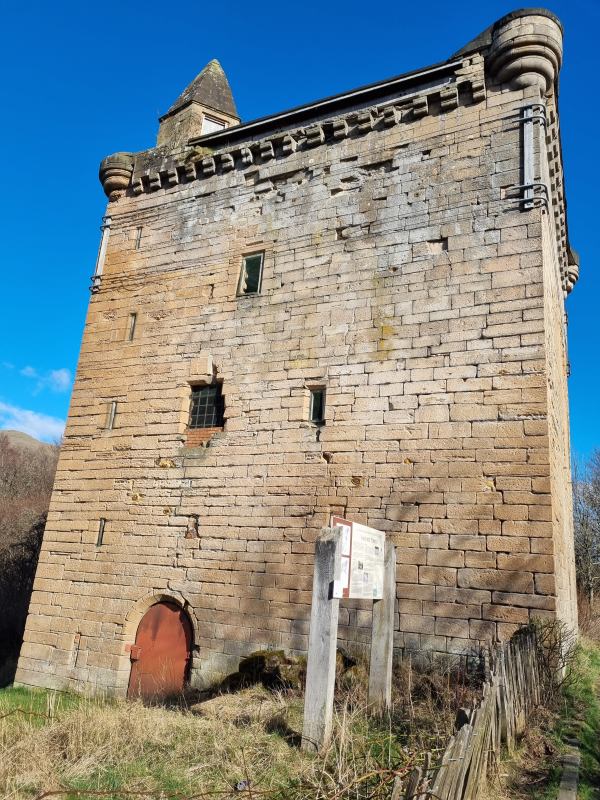 |
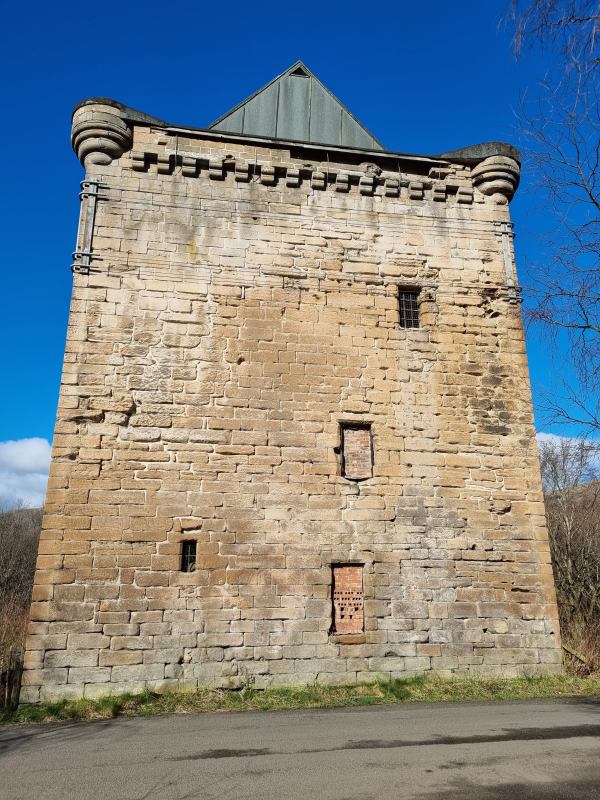 |
External images of the tower from May 2022
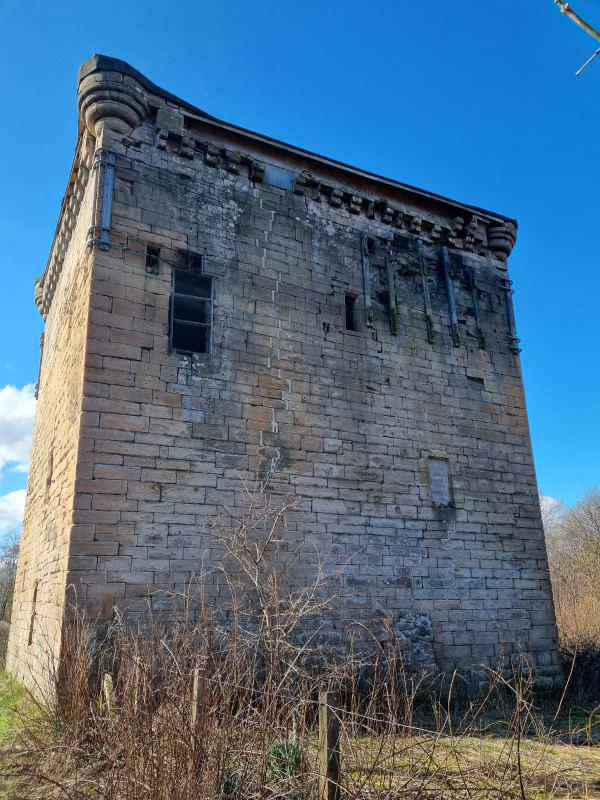
The tower is built of pink sandstone ashlar blocks, pinned with oyster shells. Externally the tower is quite plain but internally it is much more elaborate, with ornate fireplaces, window recesses with bench seating, smaller rooms for family privacy and domestic comfort.
The main entrance is at ground floor level in the west wall. A flagged path led into the entrance passage, which was fitted for both outer and inner doors. Access to all floors is gained from there into a circular, turnpike stair in the north-west corner. Opposite this is a small guard or porter chamber.
 |
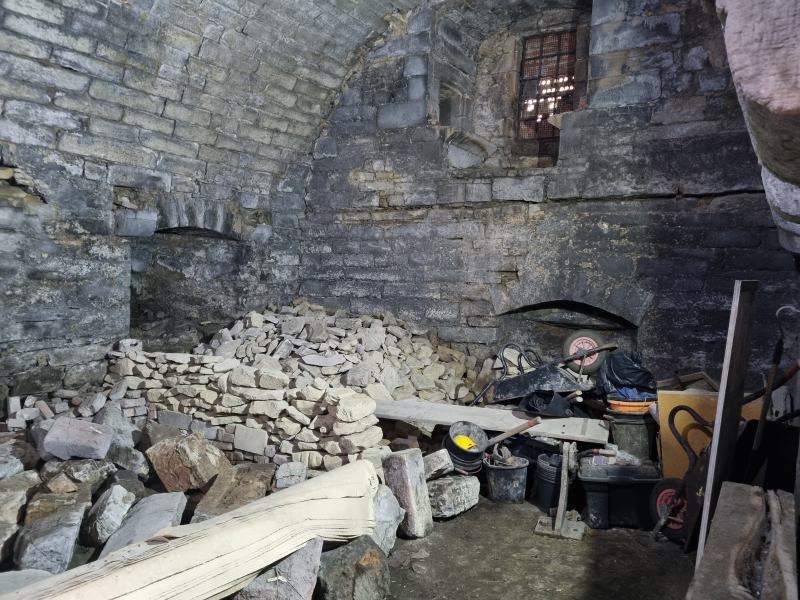 |
Internally on the ground floor - September 2022
There is a well in the ground floor room, which may have been used as a store or animal shelter in its later history. There was a chamber at entresol level, then at first floor level is the main hall. It has a floor of sandstone flags and a large fireplace with a massive lintel and elaborately moulded jambs. In the west wall a very large, recessed window with the remains of a grille leads to a private chamber which may have been wood panelled. The floors at second and third storey levels have not survived, probably casualties of the fire which is thought to have gutted the tower in the 1750s.
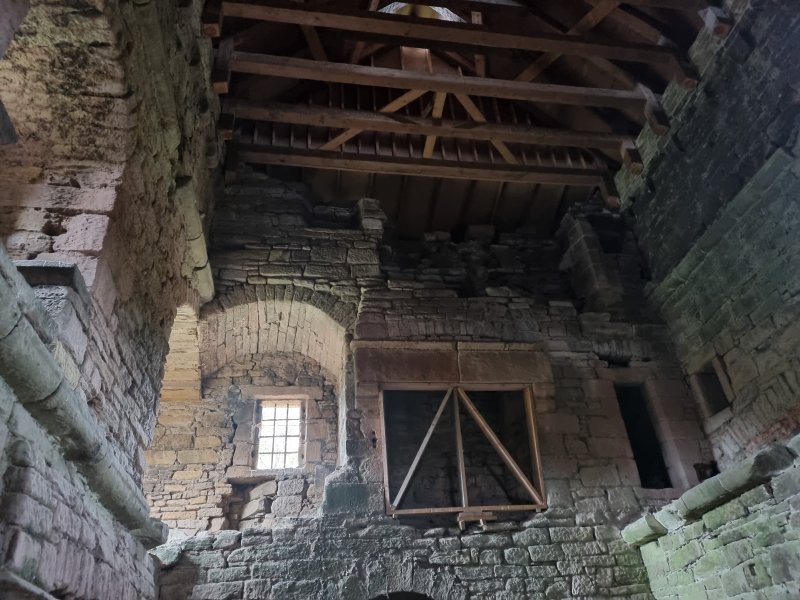 |
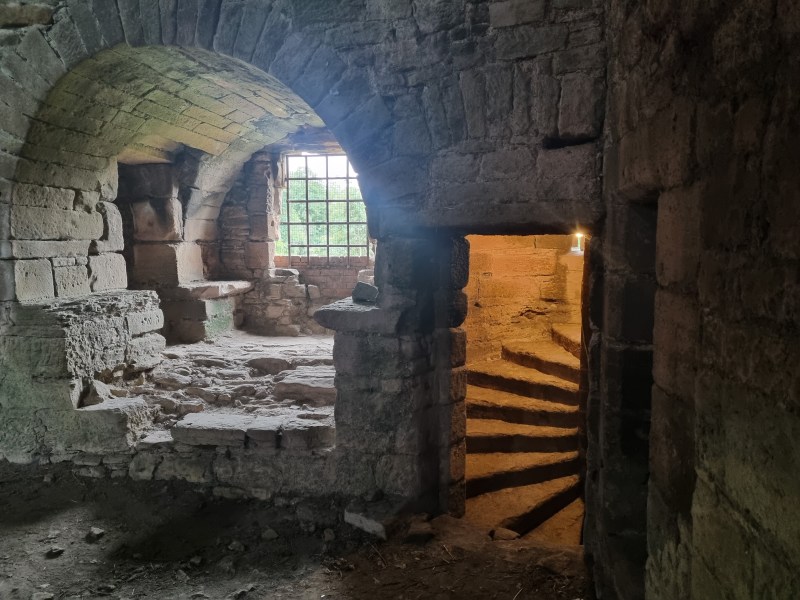 |
First Floor internal pics
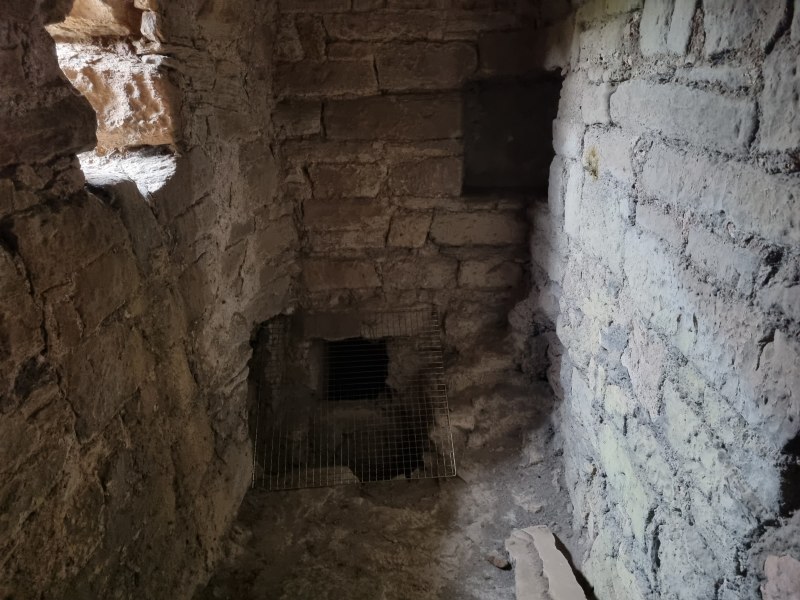
The wall heads are quite intact, with a broad parapet walk with bartizans (small corner turrets) resting on four continuous corbel courses. Several courses of the outer wall of the parapet are, however, missing. At the top of the stairs is an unusual hexagonal cap-house with an intact pyramidal roof.
In 1529 Alexander Schaw was granted the hereditary post of Master of the King’s Wine-Cellar. The family was apparently allowed to use three covered golden cups on its coat of arms as a recognition of this honour. The post was reconfirmed on his grandson by James VI. Another Alexander Schaw became heir to the Sauchie estate in 1623 and was knighted in 1633 by Charles I during his tour of Scotland.
The tower was once enclosed by an inner courtyard wall, still visible to the north of the tower and around 25 metres to the west, protected by a ditch. There may also have been an outer courtyard wall. The river Devon is located quite nearby to the north.
The west courtyard wall, and perhaps part of a medieval west range, were re-used as the ground floor of a mansion house. Sauchie House appears to have been a typical laird’s house of the early 17th century, when tower houses had gone out of fashion. It was two storeys high, with a vaulted ground floor divided into three chambers. The main access to the first floor was via an external staircase in the centre of the east wall, with an elaborate entrance porch over the door.
There were three carved, pedimented dormers on each side of the house. The pediments on the east side were all elaborately carved with details which suggest that the house was created in 1631 by adapting and restoring an existing medieval structure. The person most likely to have done this and whose initials were carved over the entrance, was Alexander Schaw, soon to be knighted by Charles I.
The Sauchie estate passed to another branch of the Schaw family, who at around 1700 built the mansion of Schawpark, and then in 1752 by the marriage of a daughter, Marion Schaw, to the Cathcart family. Sauchie House, located in the tower courtyard, was still occupied, probably by tenants, until it was demolished after the estate was bought for coal extraction in the early 1930's. Schawpark was sold in 1826 to the Earl of Mansfield, who was then Lord Lieutenant of Clackmannanshire, and the house was eventually demolished in 1961. Sauchie tower was left to fall into ruin. The tower roof collapsed around 1858 and the bartizans (corner turrets) and gables collapsed around 1890. Sauchie tower is now the only survivor of the three residences of the Schaw family. The 79-foot tall Sauchie tower is protected as a Scheduled Ancient Monument.
Proposals for restoration of the tower were put forward in the 1980's, when a series of archaeological excavations were carried out. However, restoration work was not completed. The building is now owned by Clackmannanshire Heritage Trust, which has erected a temporary roof and carried out some internal and external repairs and stabilisation.
In 2002, the Friends of Sauchie Tower were formed to promote the restoration of the building and have carried out site clearance and some further archaeological excavations were carried out in 2005. Recovery of fallen masonry has been undertaken to aid future repairs. Further excavations are planned.
